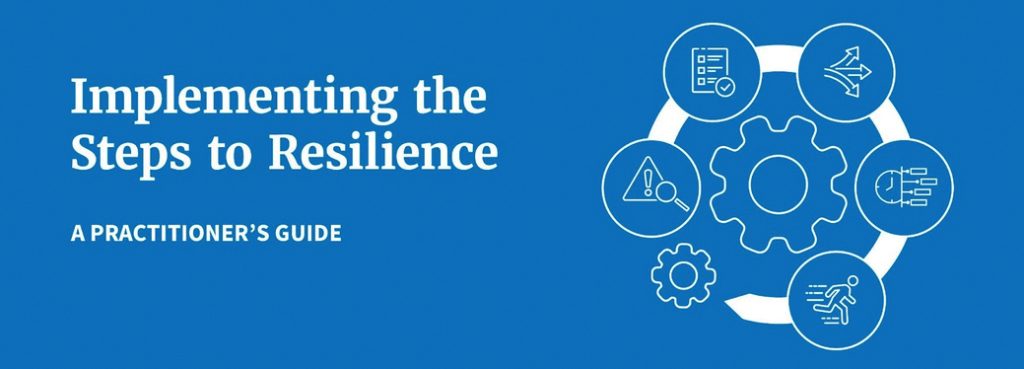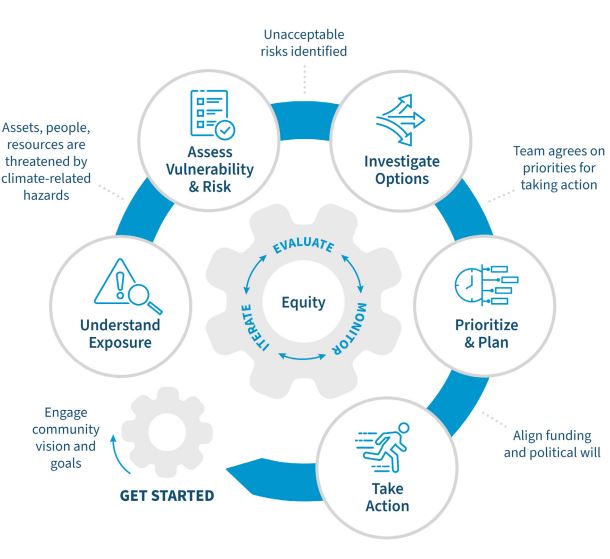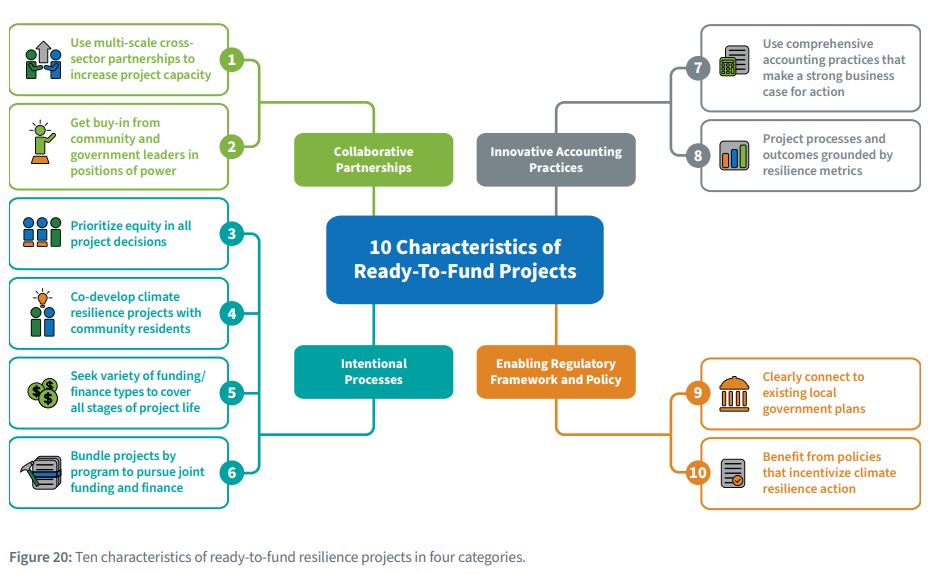
This guide helps incorporate climate risk into equitable, long-term decision-making.
Implementing the Steps to Resilience: A Practitioner’s Guide
Access the Guide here
Overview
Implementing the Steps to Resilience: A Practitioner’s Guide (Guide) is a handbook for national climate resilience created by the National Oceanic and Atmospheric Administration (NOAA) Climate Program Office and their partners.
The Guide, along with accompanying online resources, is designed to help climate adaptation practitioners work with local governments and community organizations to incorporate climate risk into equitable, long-term decision-making. Specifically, the Guide helps resilience and adaptation professionals learn to implement the U.S. Climate Resilience Toolkit’s Steps to Resilience.
How to Use the Guide
This Guide can be used in a couple of ways. First, it could be used as a workbook where the used marks it with notes and fills out the exercises. Second, it can be used as guidance when working with a community to implement the U.S. Climate Resilience Toolkit’s Steps to Resilience.
The format of the Guide follows the Steps to Resilience framework, with each chapter matching with a specific “step.” Each step in the Guide contains objectives, a list of resources, opportunities for community participation, and questions for assessing success.

The Guide is divided into five steps:
- Understand Exposure – Evaluate community assets and their exposure to climate-related hazards
- Assess Vulnerability and Risk – Identify the people and community assets most vulnerable and at-risk to climate-related hazards.
- Investigate Options – List strategies to reduce the greatest climate-related risks to vulnerable populations and community assets.
- Prioritize and Plan – Design an implementation plan for the strategies that are most likely to reduce vulnerability and risk.
- Take Action – Implement and communicate the plan. Monitor. Iterate.
Ultimately, following the five steps laid out in this Guide helps users develop ready-to-fund projects.

Accompanying Resources
NOAA and their partners also released four supplementary resources aimed at helping practitioners scale-up climate adaptation and resilience planning.
- Ready-to-Fund Resilience supports practitioners’ work within the climate resilience funding and finance system.
- Centering Equity in Climate Resilience Planning and Action: a Practitioner’s Guide recommends equity principles to apply during adaptation and resilience planning.
- Moving from Faith-based to Tested Adaptation Process and Approach: How Will We Know We’re Adapting? emphasizes evaluation and measurement of adaptation practices.
- Incorporating Nature-based Solutions into Community Climate Adaptation Planning uses the “Steps to Resilience” framework to explore nature-based adaptation.




